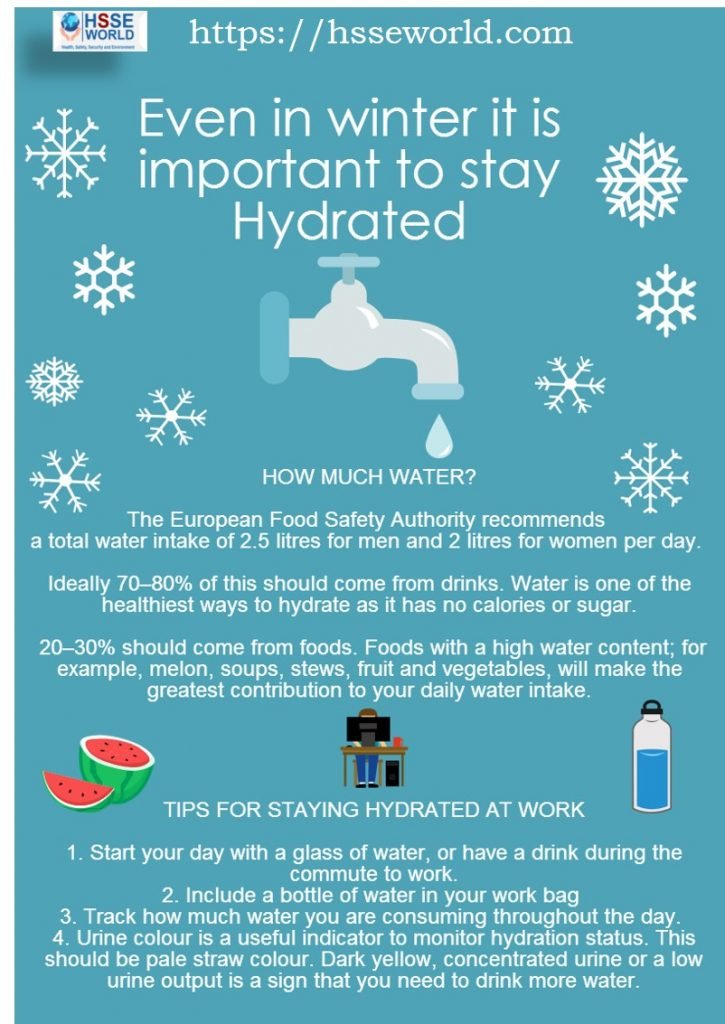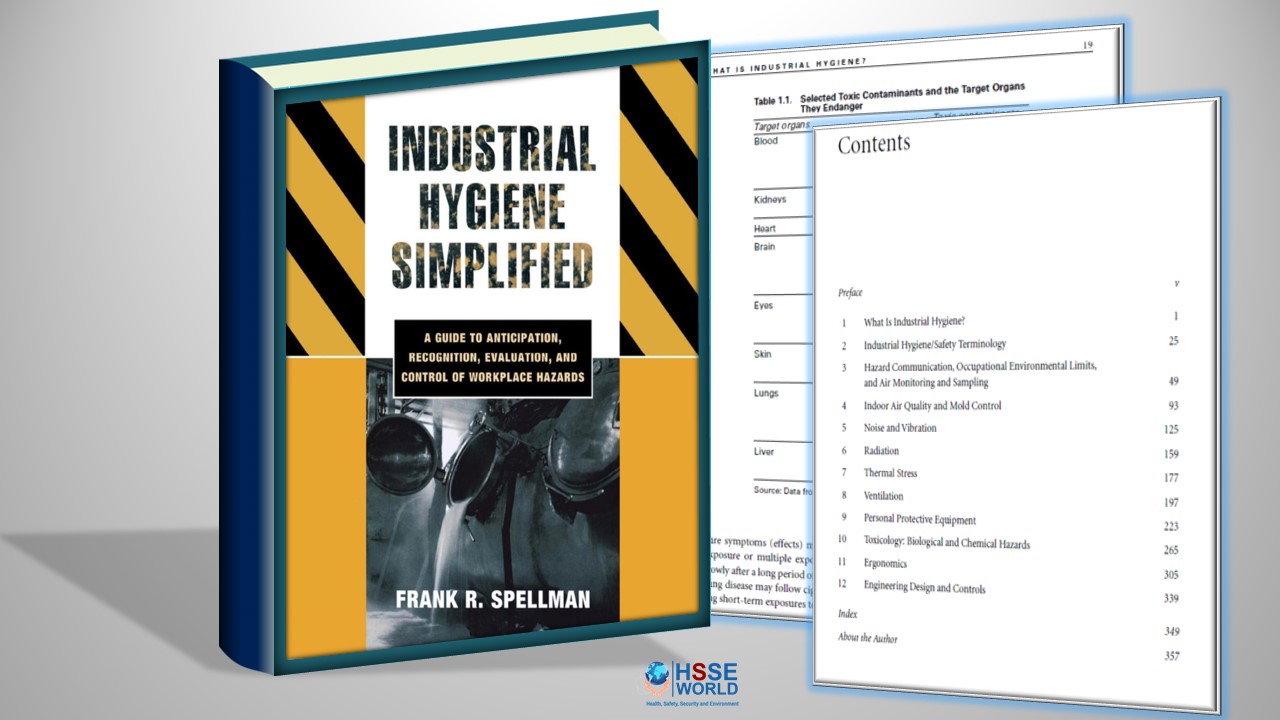Most people think of dehydration as a summer hazard, but cold weather also presents workers with a serious dehydration risk.
In this article, we’ll look at how dehydration occurs in colder weather, signs to watch out for, and effective strategies to prevent it.
Understanding Cold Weather Dehydration
On a hot day, the sweat on your skin is a visual cue that you’re losing fluids. In colder, drier air, however, sweat evaporates more quickly and doesn’t accumulate on the skin in the same way. That makes the fluid loss less obvious.

During the winter, the body actually loses more fluid from respiration than on hot days. You can see this fluid loss in real-time by looking at your visible breath in the cold air. The more your body exerts itself, the more water vapor it loses this way.
(Learn more in How-does-dehydration-impact-workplace-safety/.)
The cold weather also affects the body’s ability to detect thirst (an early sign of dehydration), which means that most people drink significantly less water when it’s cold. Urine output also tends to increase as the cold moves blood and other bodily fluids from your arms and legs to your core.
In general, workers who are in cold conditions (indoors or outdoors) for less than two hours are at low risk for dehydration. Workers who spend most of their shift in the cold wearing heavy clothing and doing high-intensity activities, however, tend to sweat fairly extensively, putting them at a much greater risk.
Examples of occupations with a higher risk of dehydration include, but aren’t limited to:
- Winter construction
- Snow removal
- Food preparation and processing
- Cold storage
Older workers are also at greater risk than younger ones, as the body is less able to conserve water and effectively respond to temperature changes as it ages.
How to Recognize Cold Weather Dehydration
The signs and symptoms of dehydration vary depending on whether the condition is mild, moderate, or severe.
Signs of mild to moderate dehydration include:
- Increased thirst (though not always)
- Dry mouth or skin
- Fatigue or mood swings
- Decreased urine output or darker urine
- Dizziness or fainting
You can buy Heavy clothes from here
Dehydration that progresses to a more severe state can bring about symptoms including:
- Deep yellow or amber urine
- Significantly decreased or no urine output
- Dizziness or lightheadedness affecting the ability to walk
- Fever
- Muscle cramps
- Poor skin elasticity
- Lethargy or confusion
- Seizure
- Shock
While mild to moderate dehydration can be remedied by consuming fluids, severe dehydration may require medical treatment, including intravenous fluid replacement.
Proactively Addressing Cold Weather Dehydration Risks
Consume Lots of Fluid
Addressing the risk of dehydration in cold weather is similar to doing so in the heat. The best thing that you can do is to ensure you have water or beverages designed to help you replenish electrolytes accessible at all times and take small sips regularly all day. 3 to 6 quarts per day (including fluid from food) is a good general guideline, but note that recommended fluid intake varies depending on a range of factors, including:
- Age
- Sex
- Physical activity level
- Temperature
- Medical conditions
You can’t always rely on your thirst mechanism to tell you when you need to drink. It’s not as accurate in colder weather, and this can result in your body becoming moderately dehydrated before you feel that urge to drink something. A good rule of thumb is to drink 4 to 6 ounces of fluid every 20 minutes or so to keep your fluid levels consistent throughout your shift.
It’s also important to remember that it’s not just water that counts as fluid. Packing fresh fruits and vegetables in your lunch can help you stay hydrated, too.
Dress for the Weather
Your body loses heat more quickly when you’re wet, so dress for colder weather by wearing layers that you can easily take on or off as you get warmer or colder. Avoid using 100% cotton base layers, which are highly absorbent and pull moisture away from the body.
Take Frequent Breaks in Warm Areas
Workers should be allowed frequent breaks in warm areas that are supplied with beverages. Coffee counts, but caffeine is a diuretic. Water and electrolyte beverages are always preferable.
Educate Workers
Finally, workers should receive training about the risks and signs of winter dehydration. Many workers (and supervisors and managers) simply don’t realize that this is an issue. It’s only by providing adequate education that workers can take proactive steps to ensure they’re getting sufficient fluid to ward off dehydration in colder weather.
Training should include how cold weather dehydration happens, what signs and symptoms to watch out for, and ways to reduce the risk.
Final Words
Dehydration is a risk for workers year-round, whether they’re working in hot and humid conditions or cold and dry ones. The body needs sufficient fluids to perform properly, no matter the season.
In addition to providing warm fluids for workers, organizations should educate their employees about the signs and symptoms of cold weather dehydration and what they can do to prevent it




